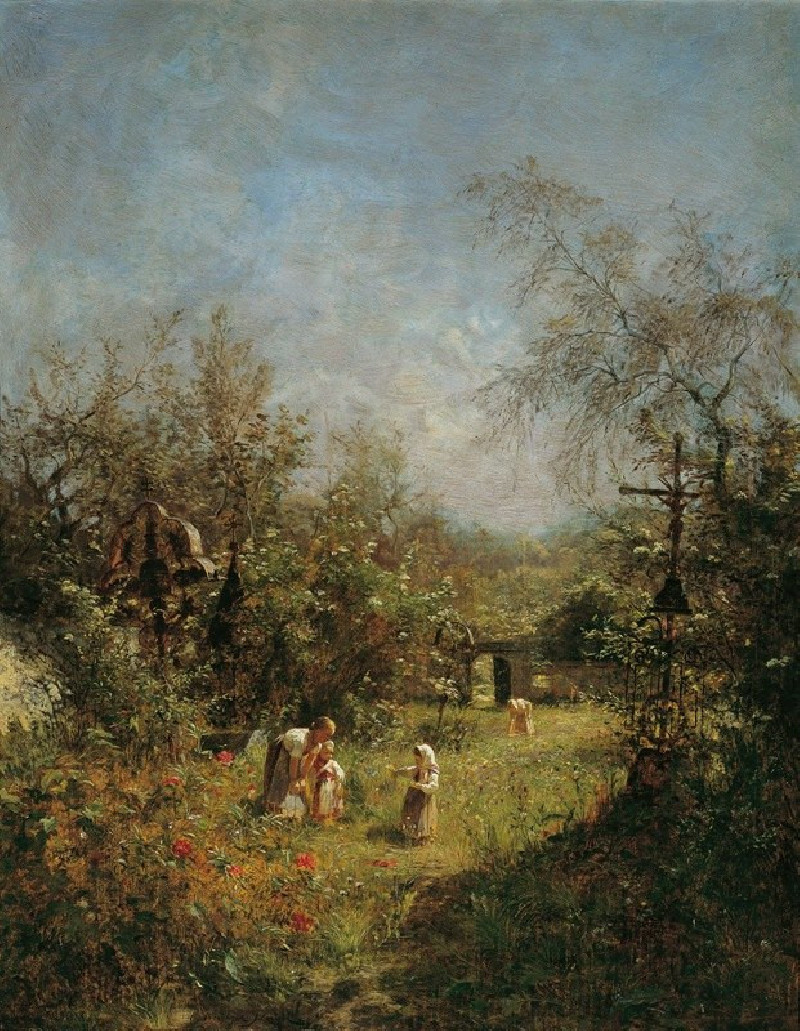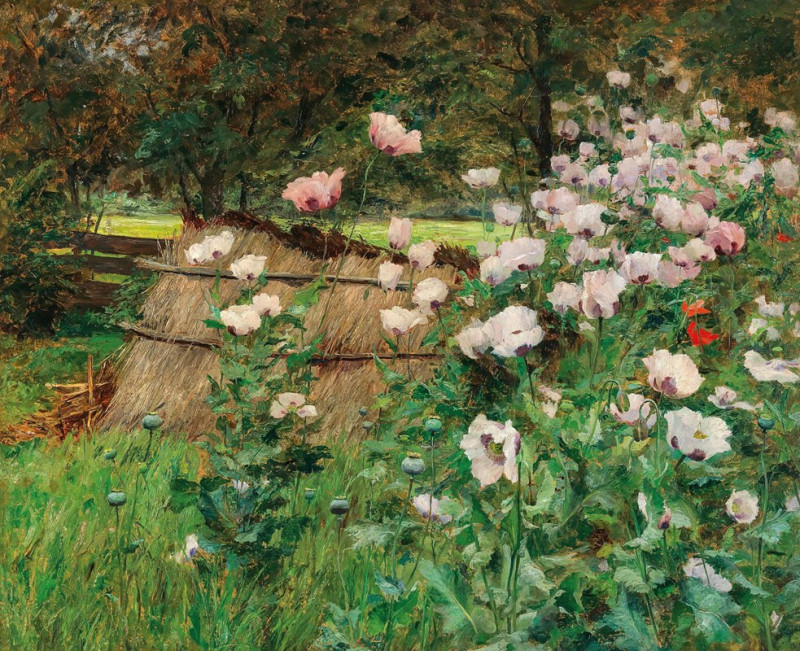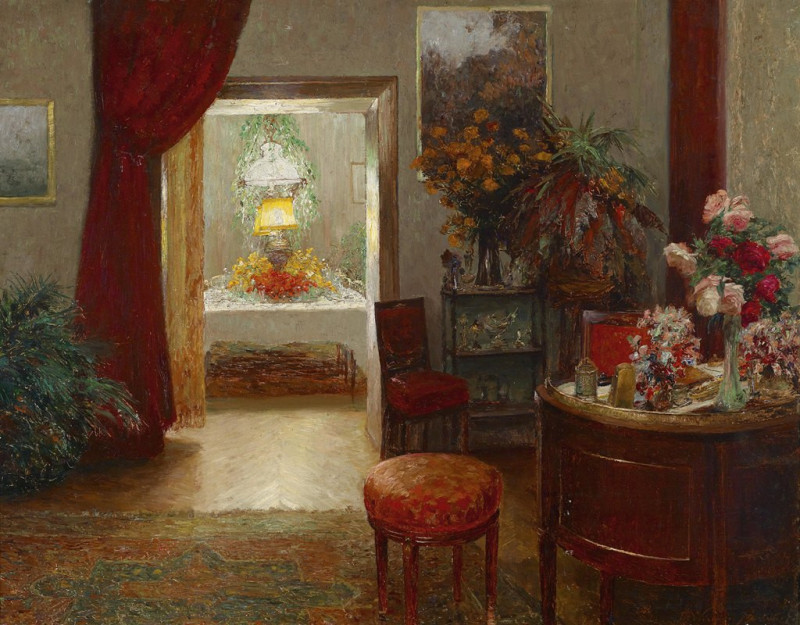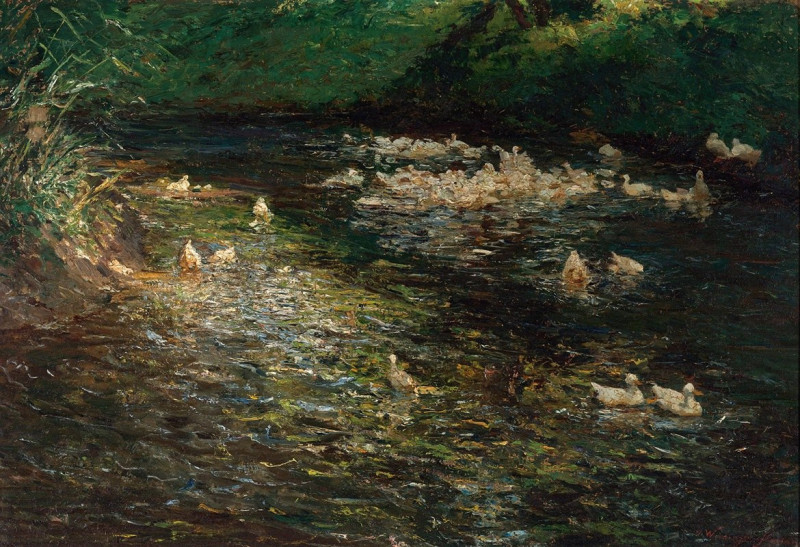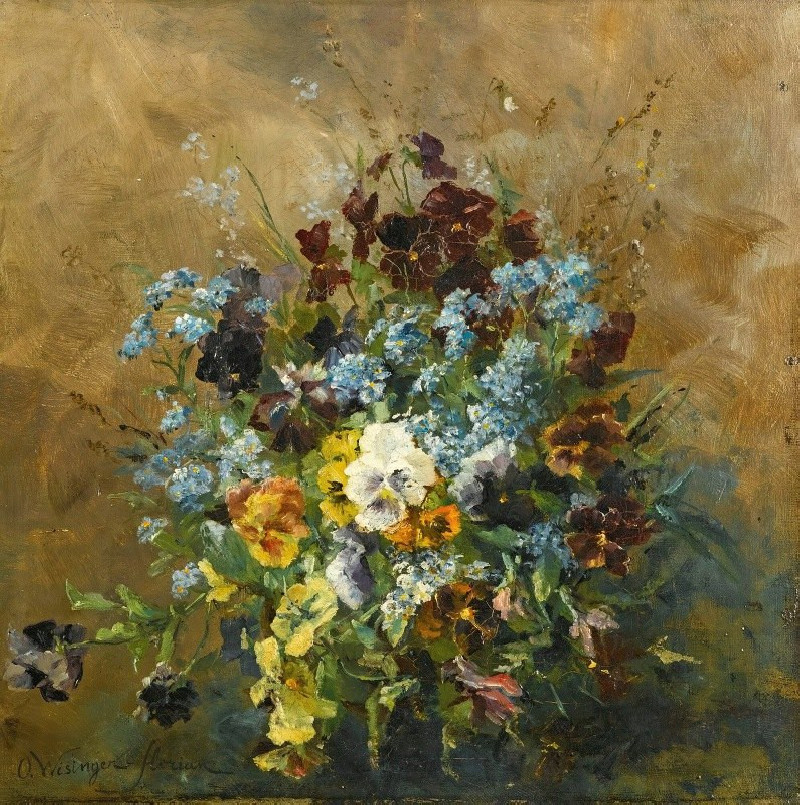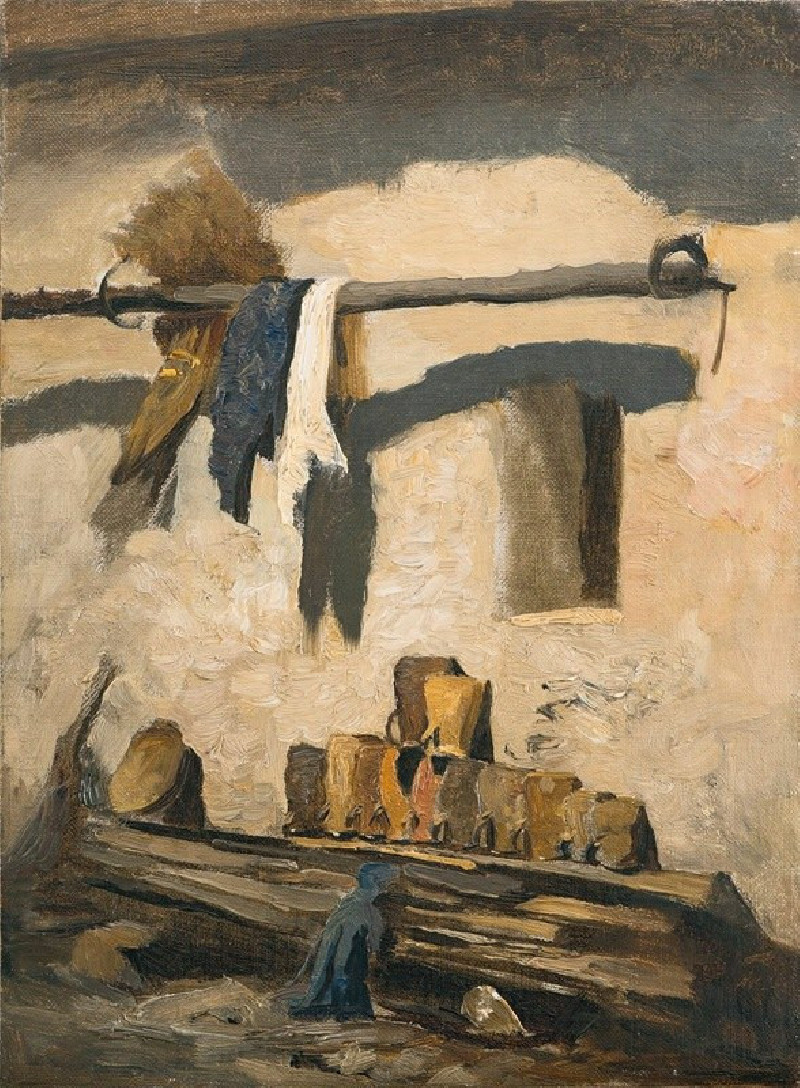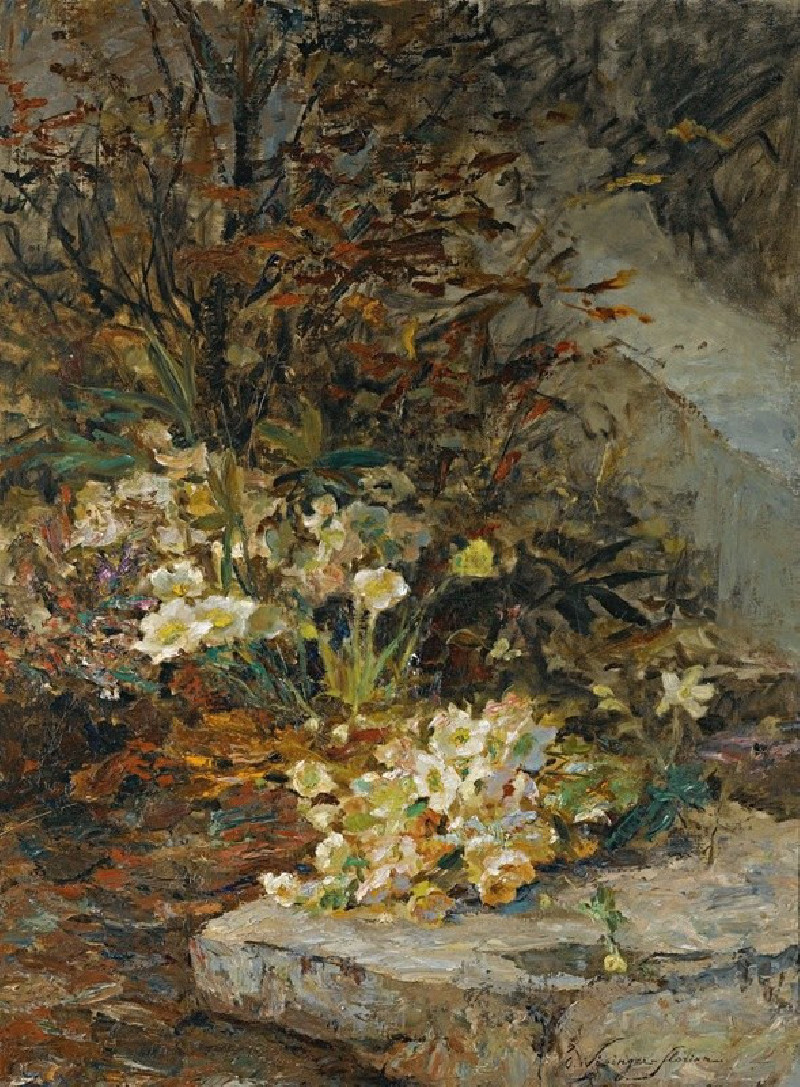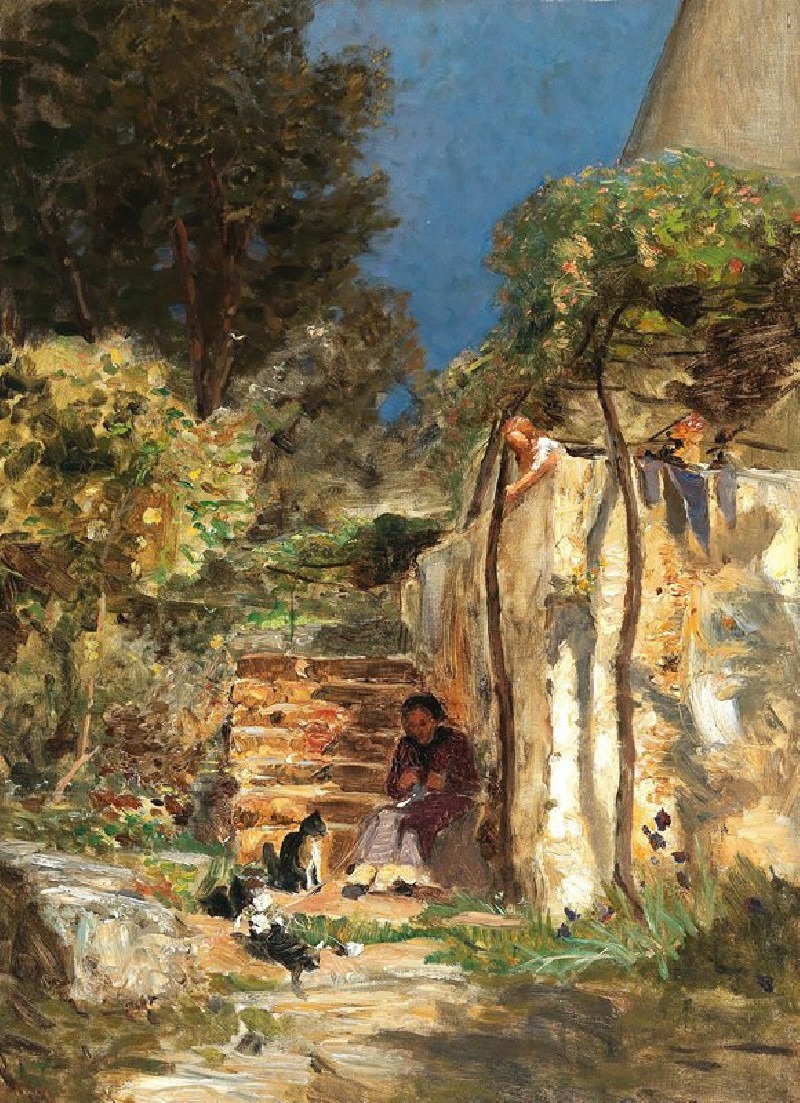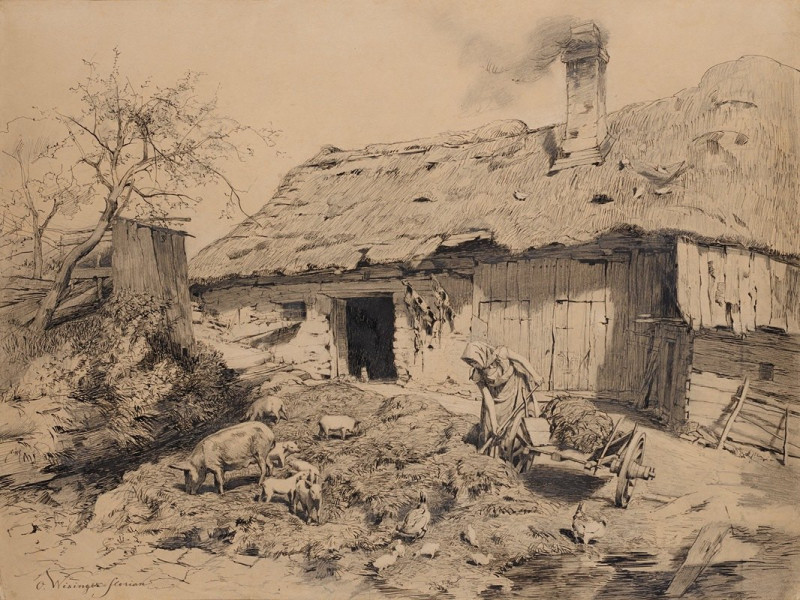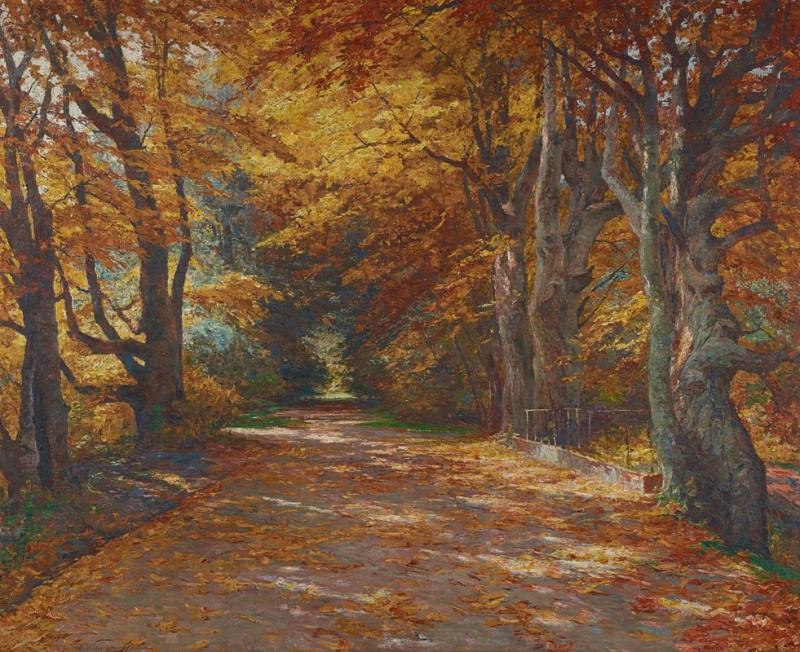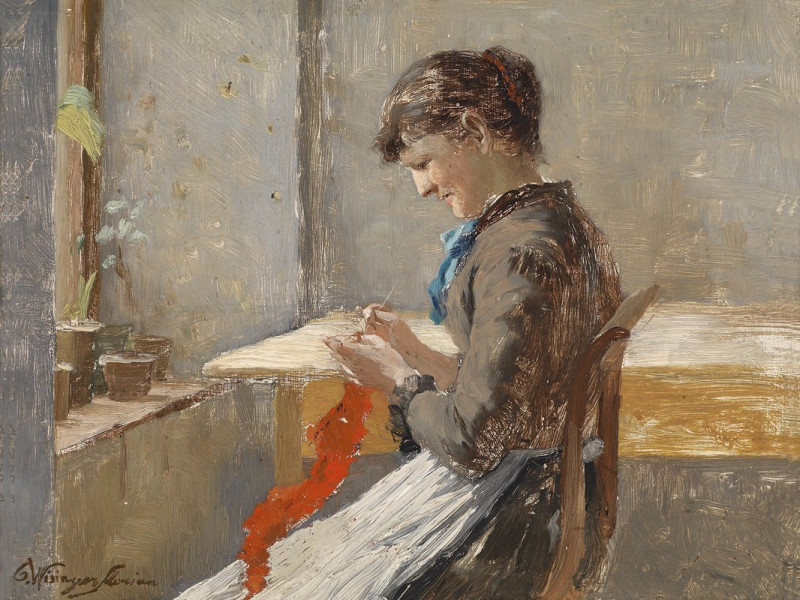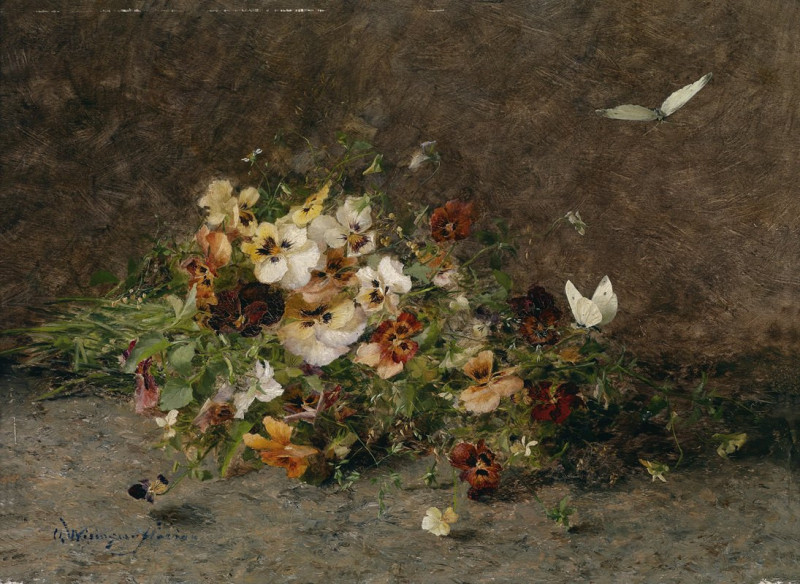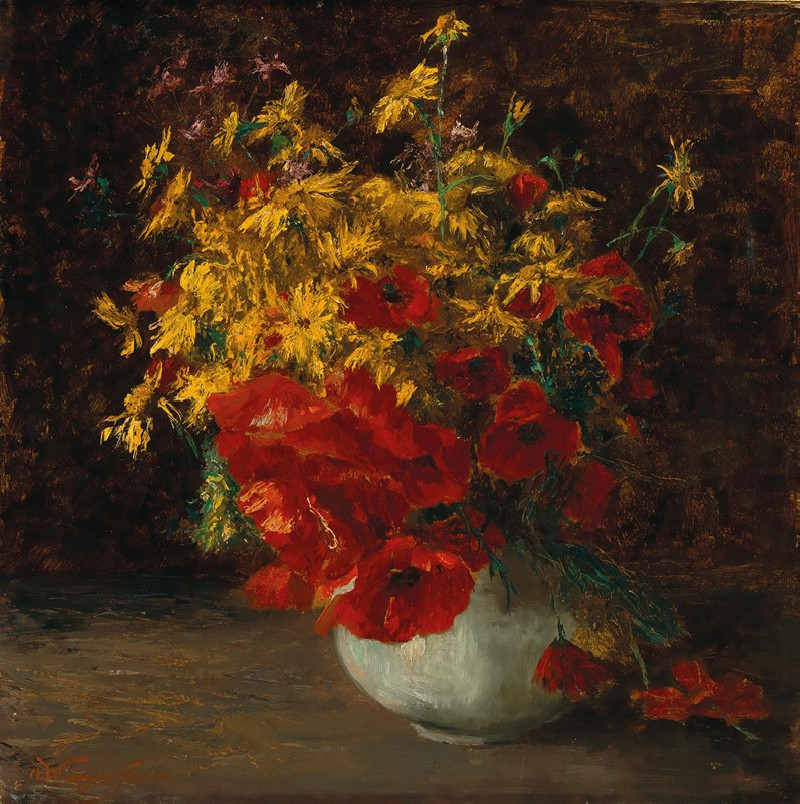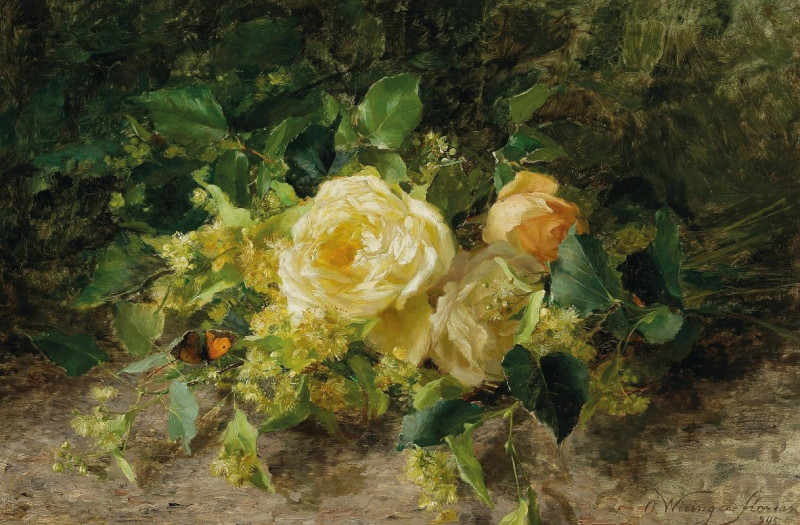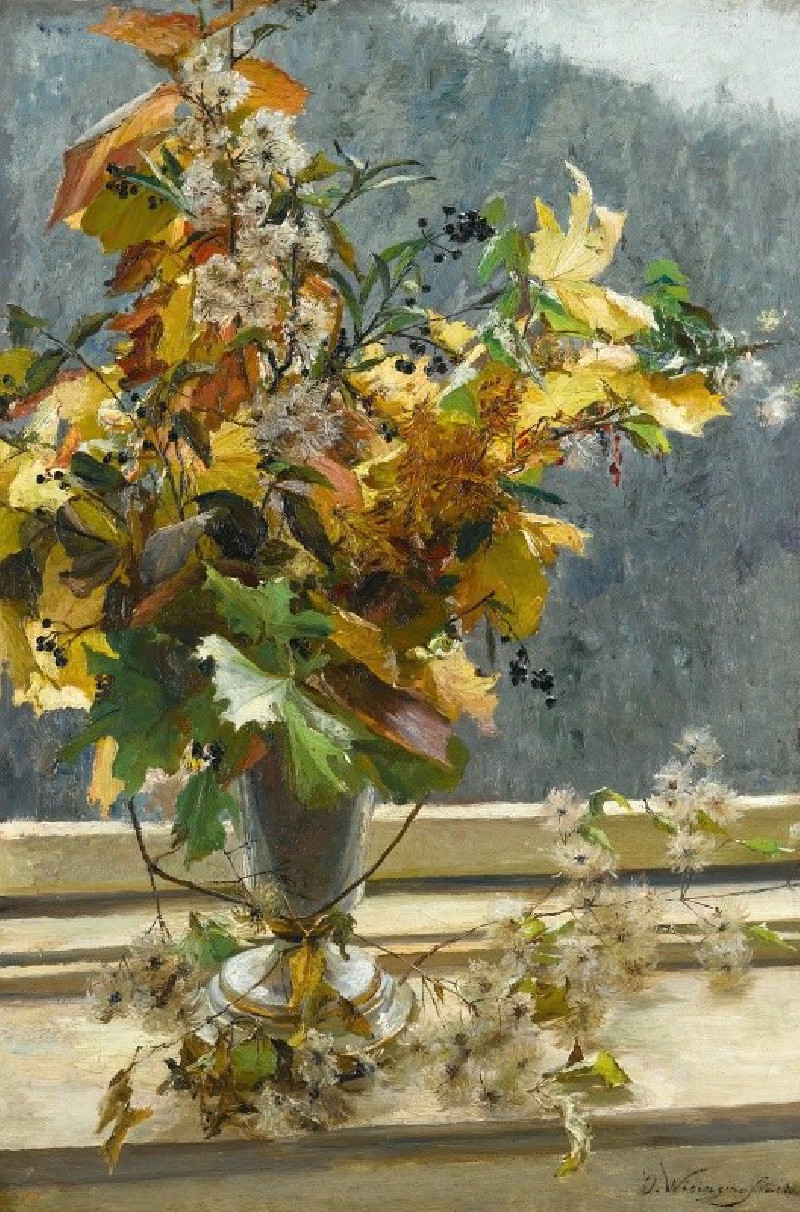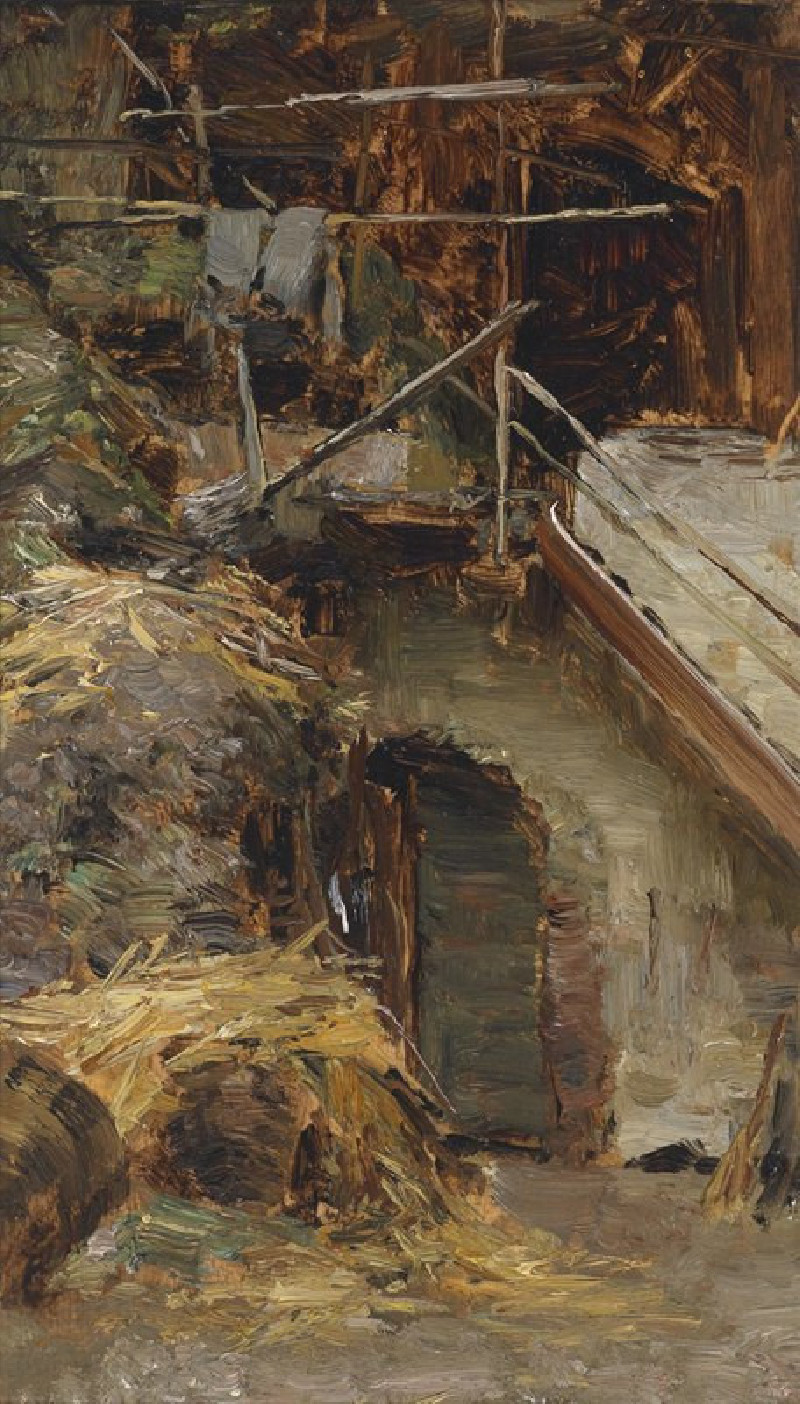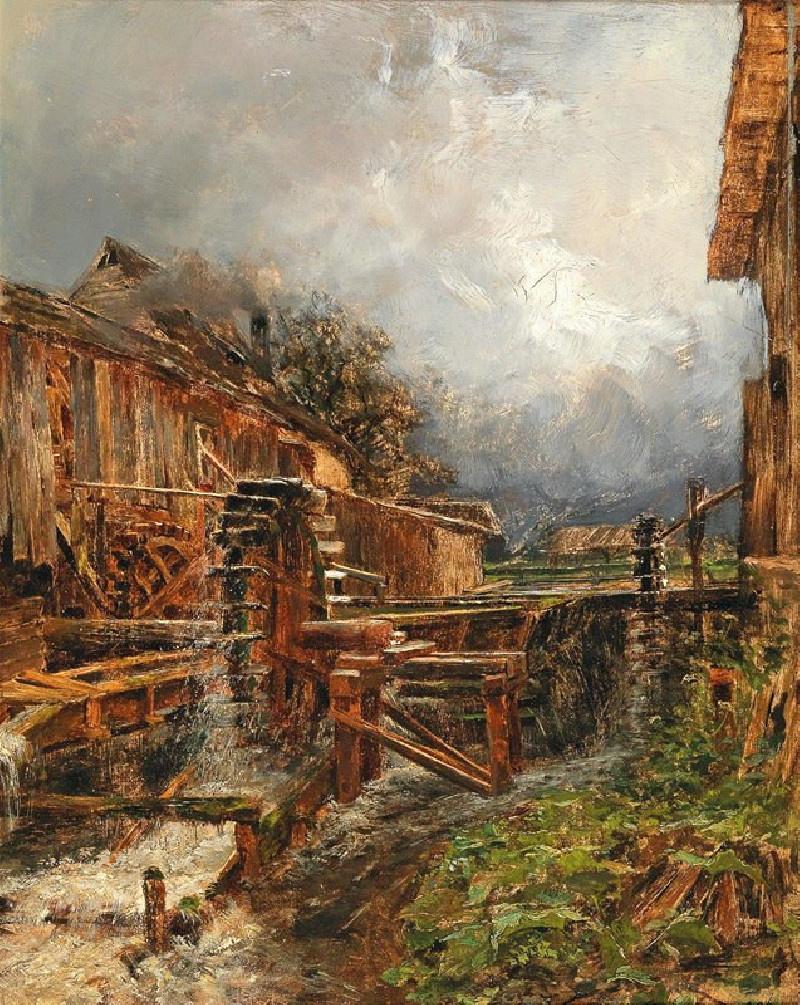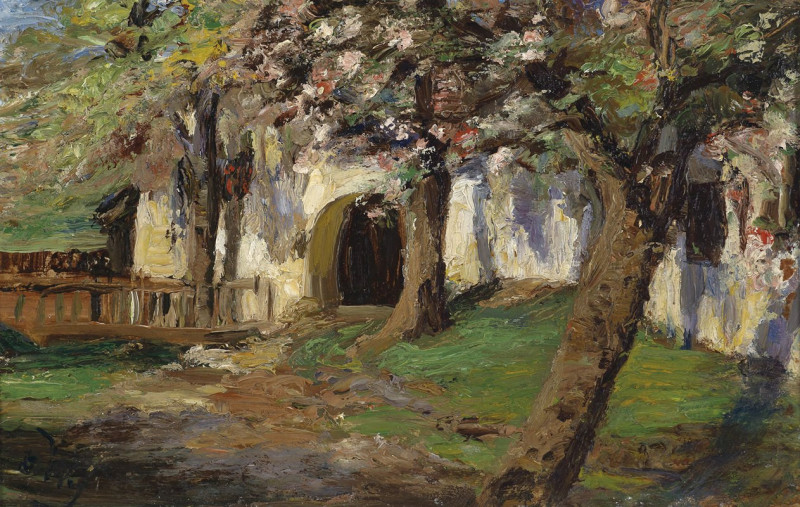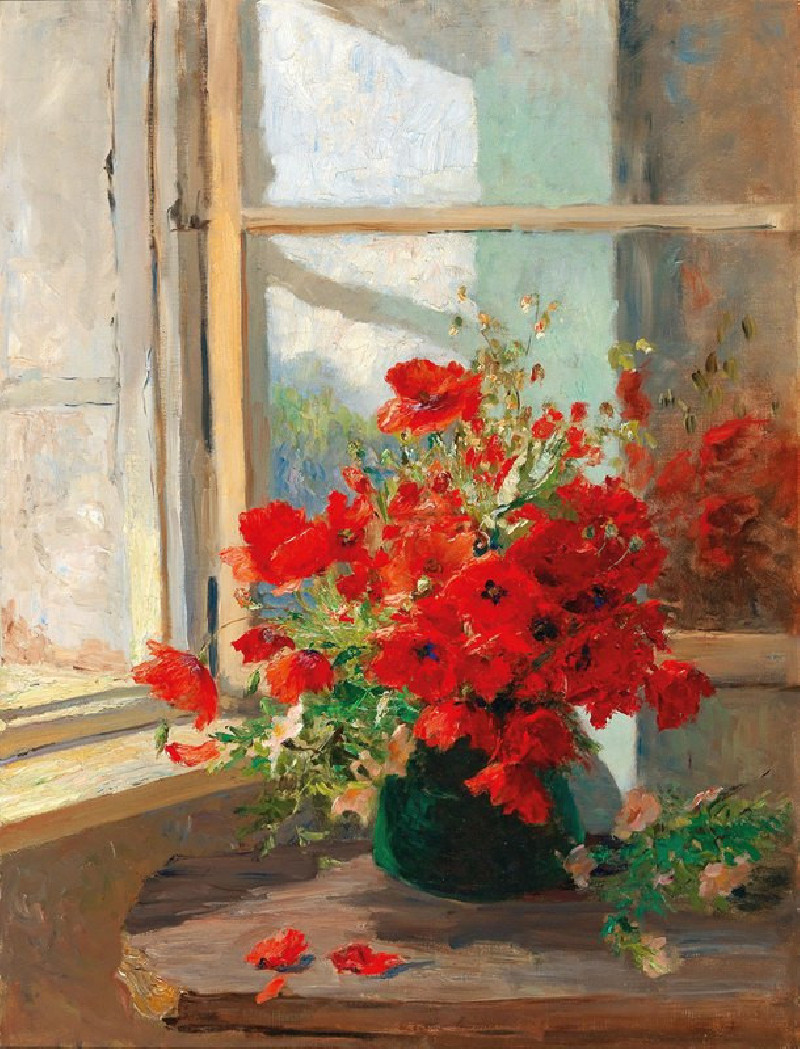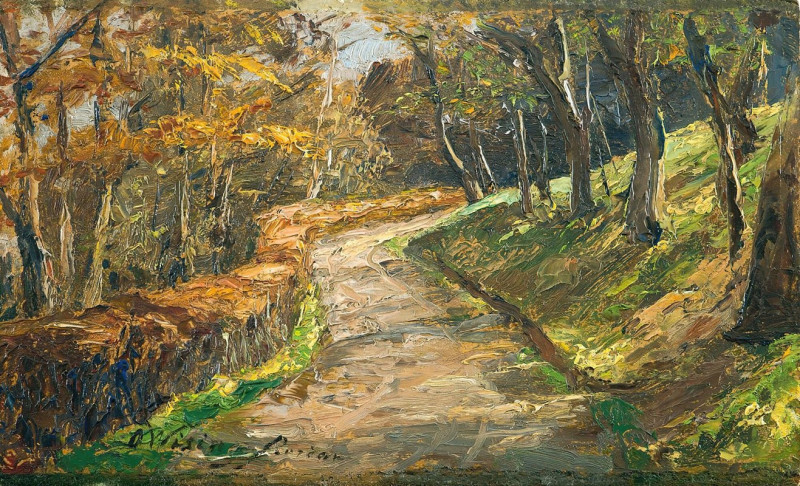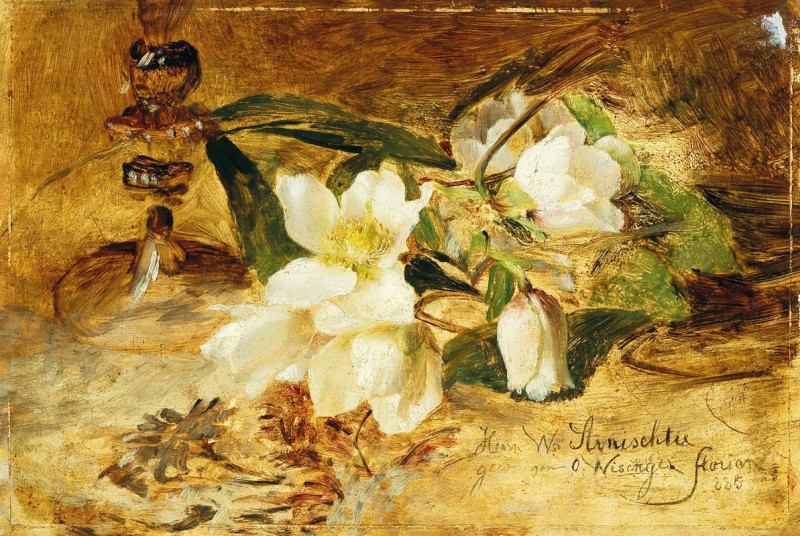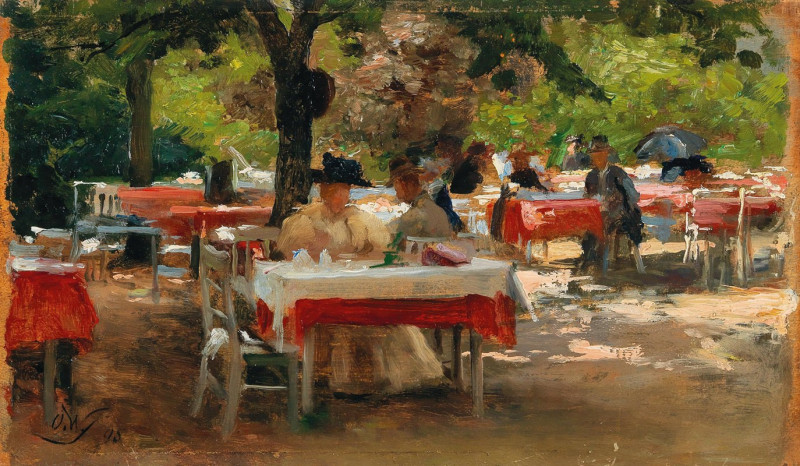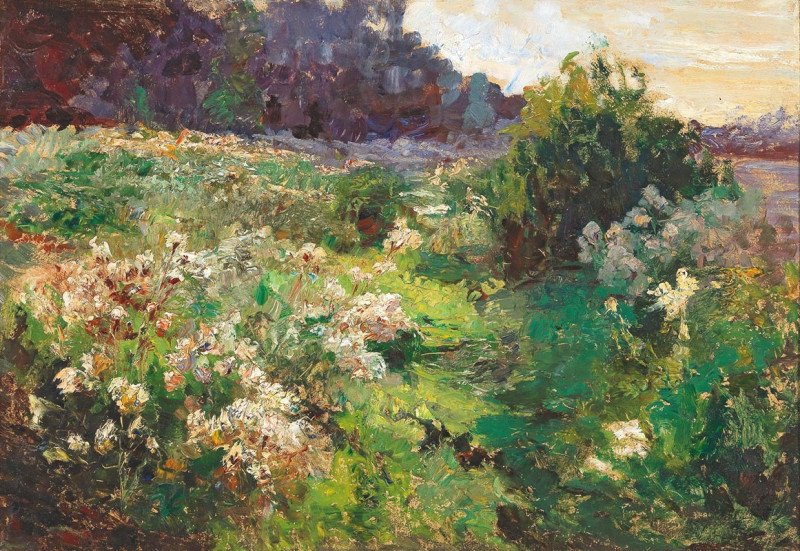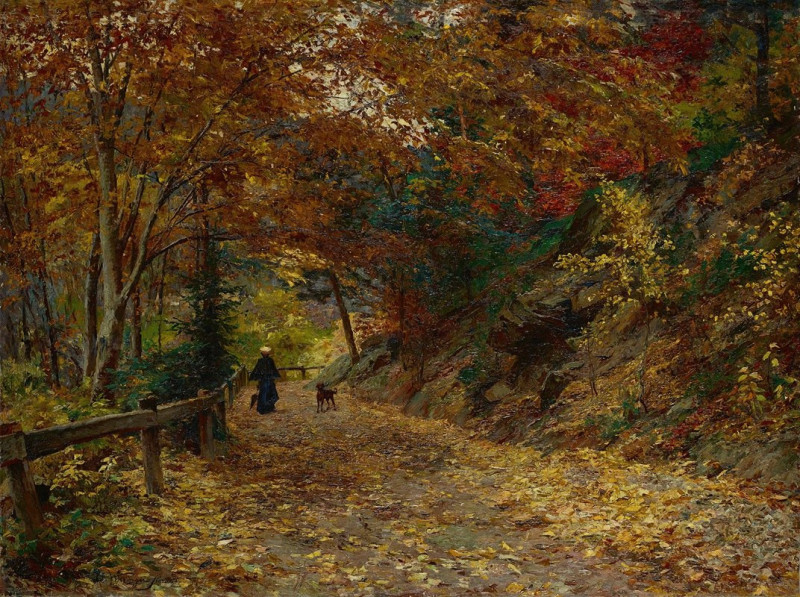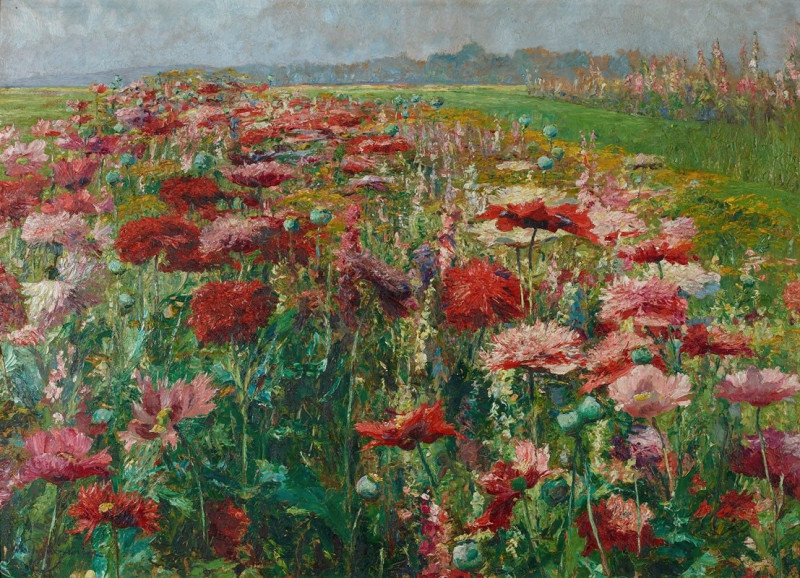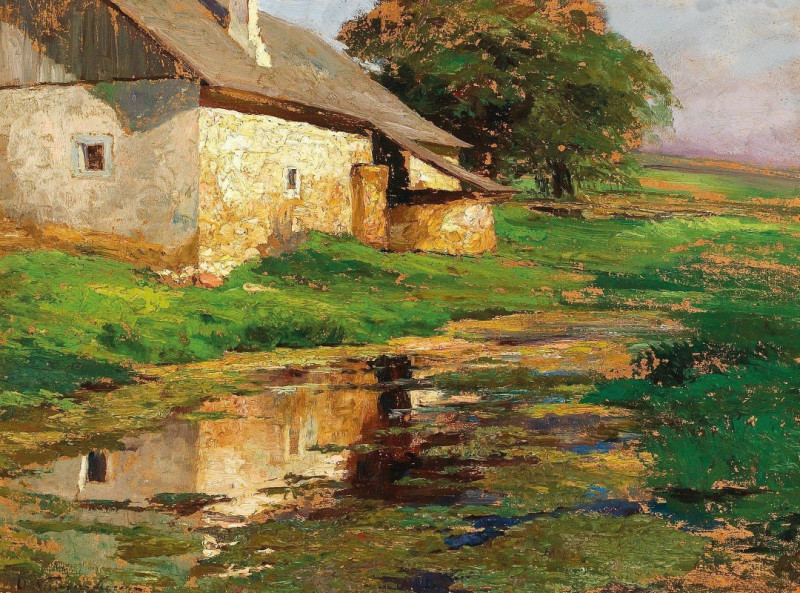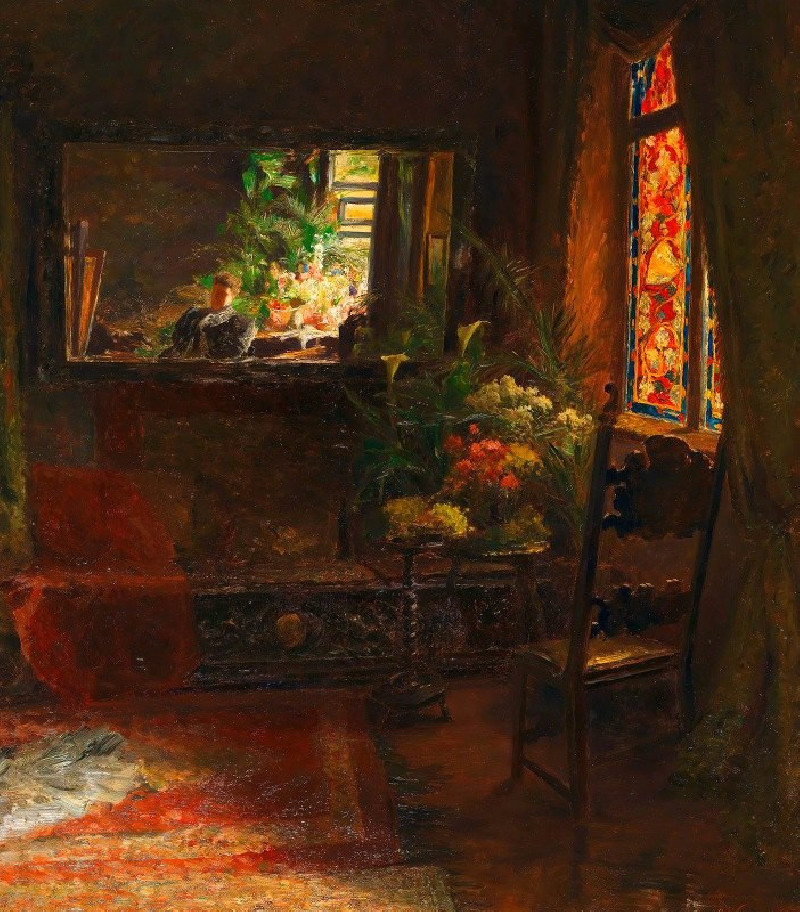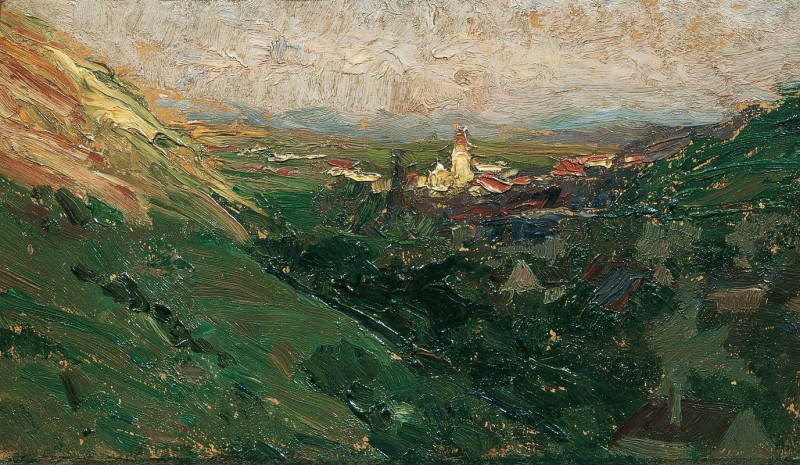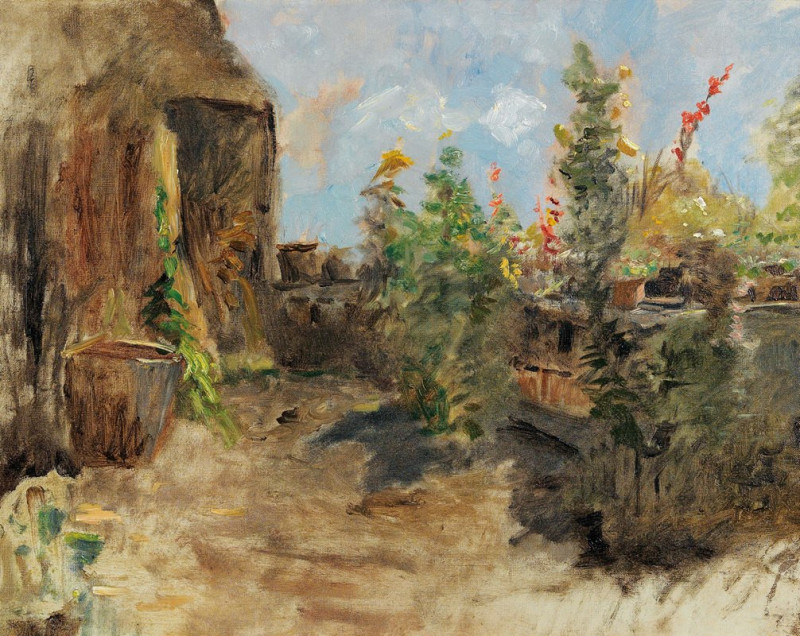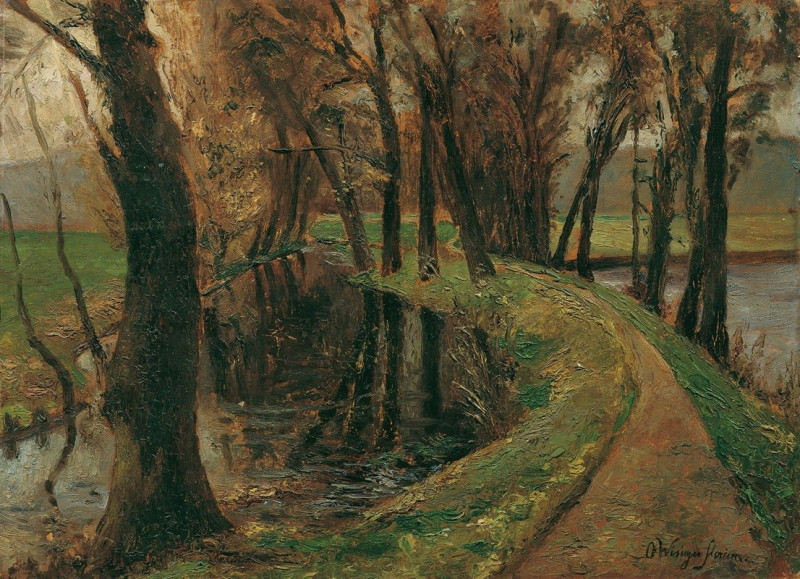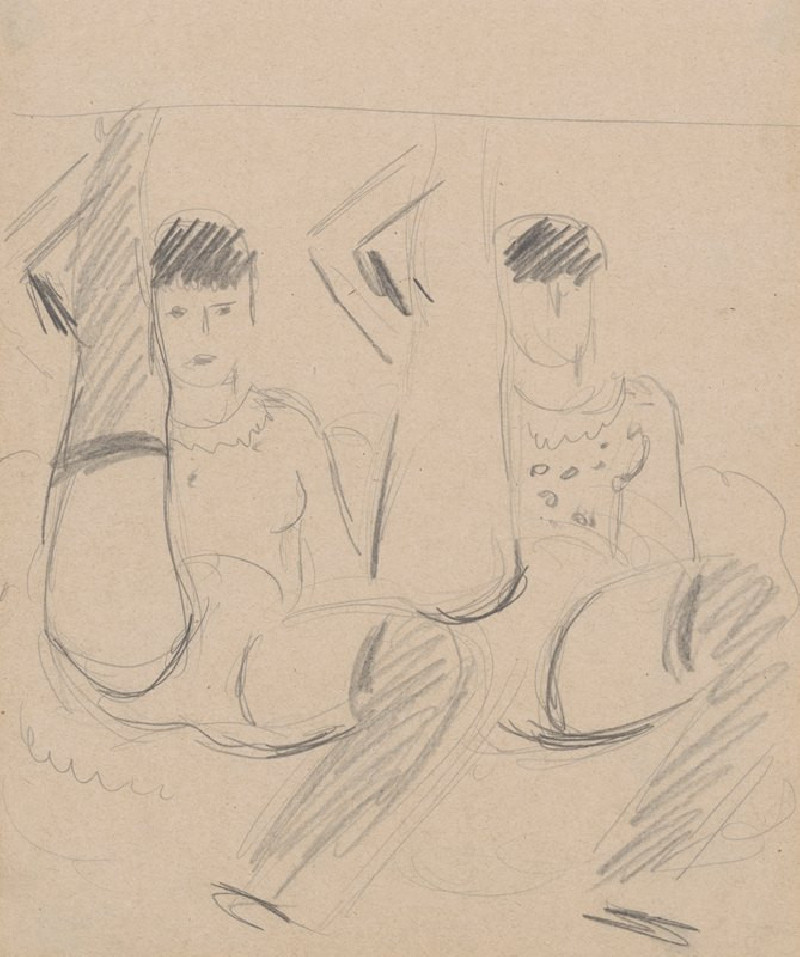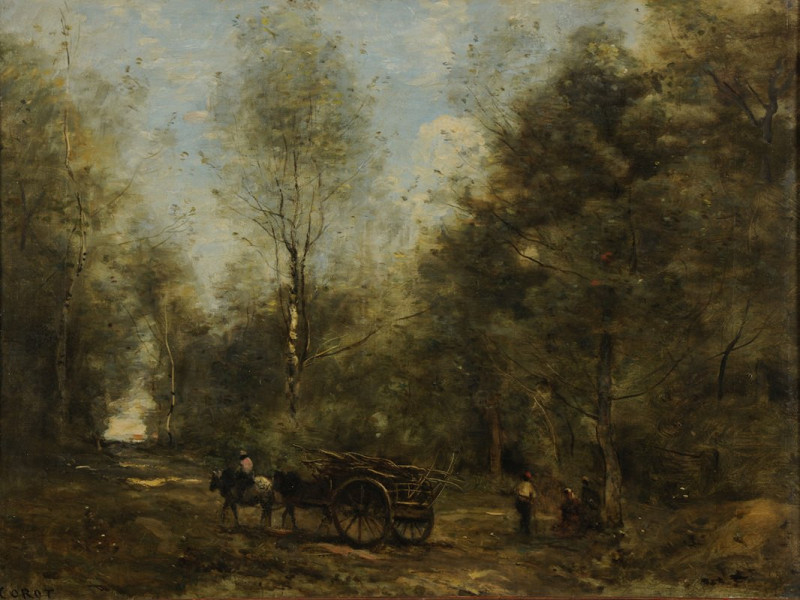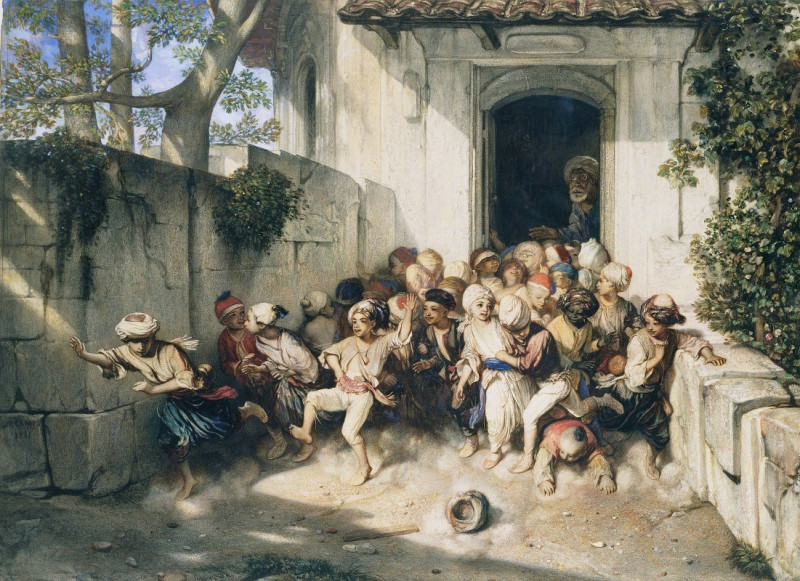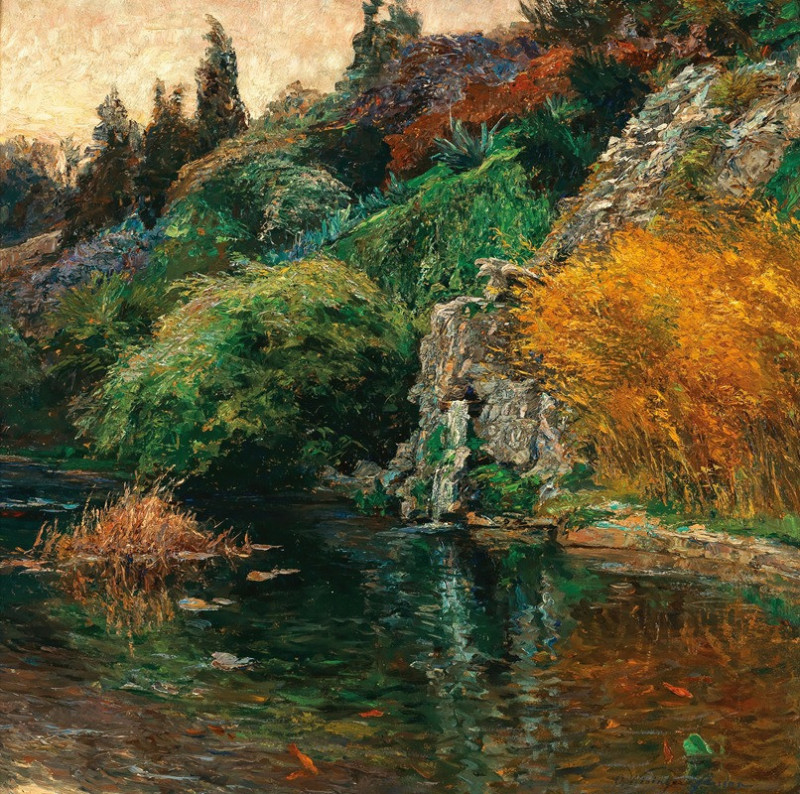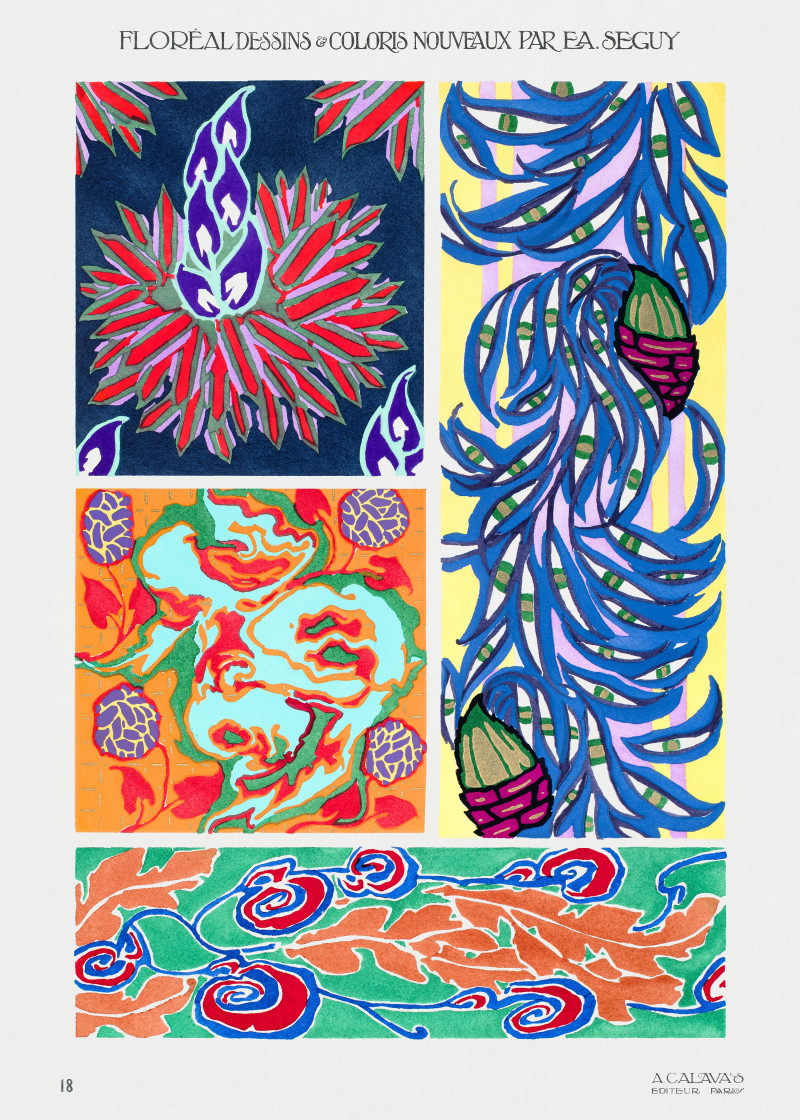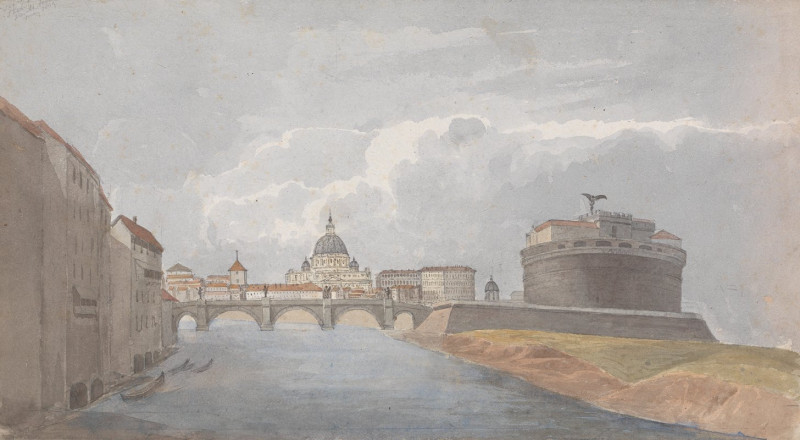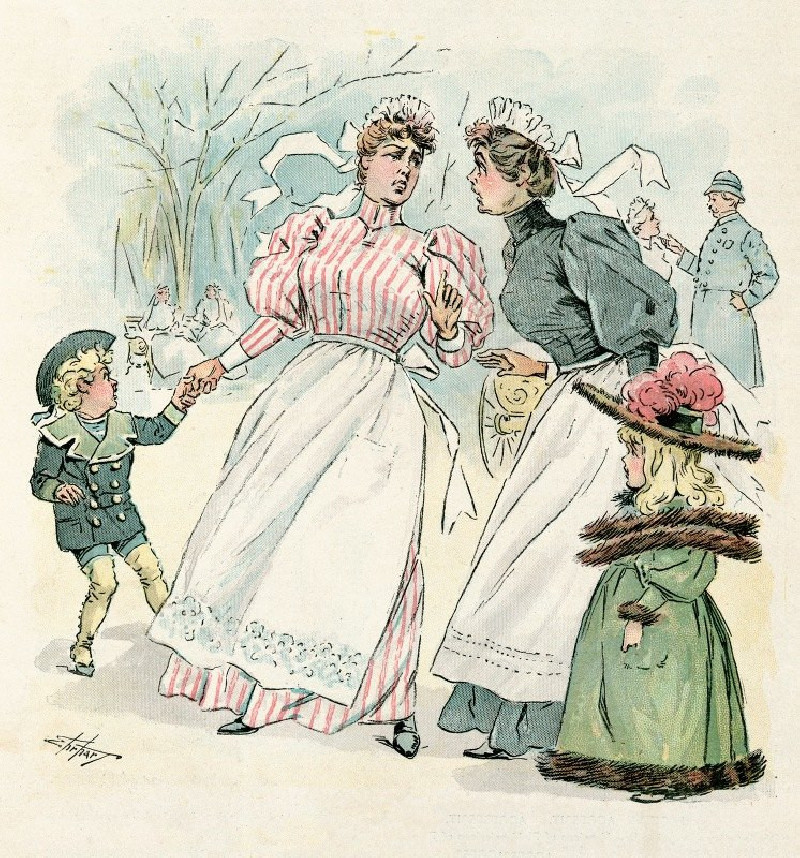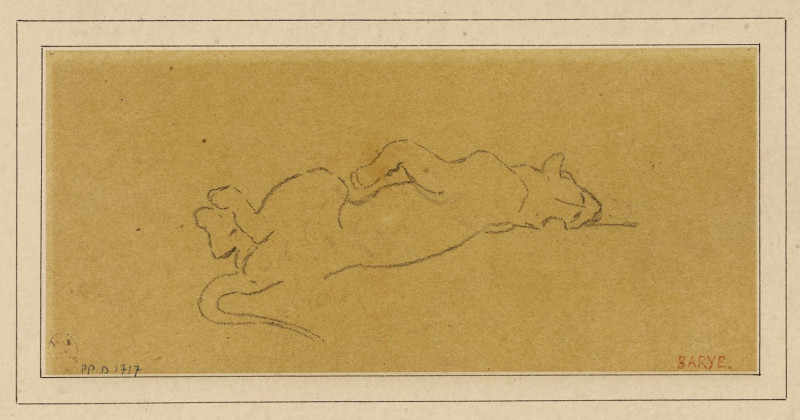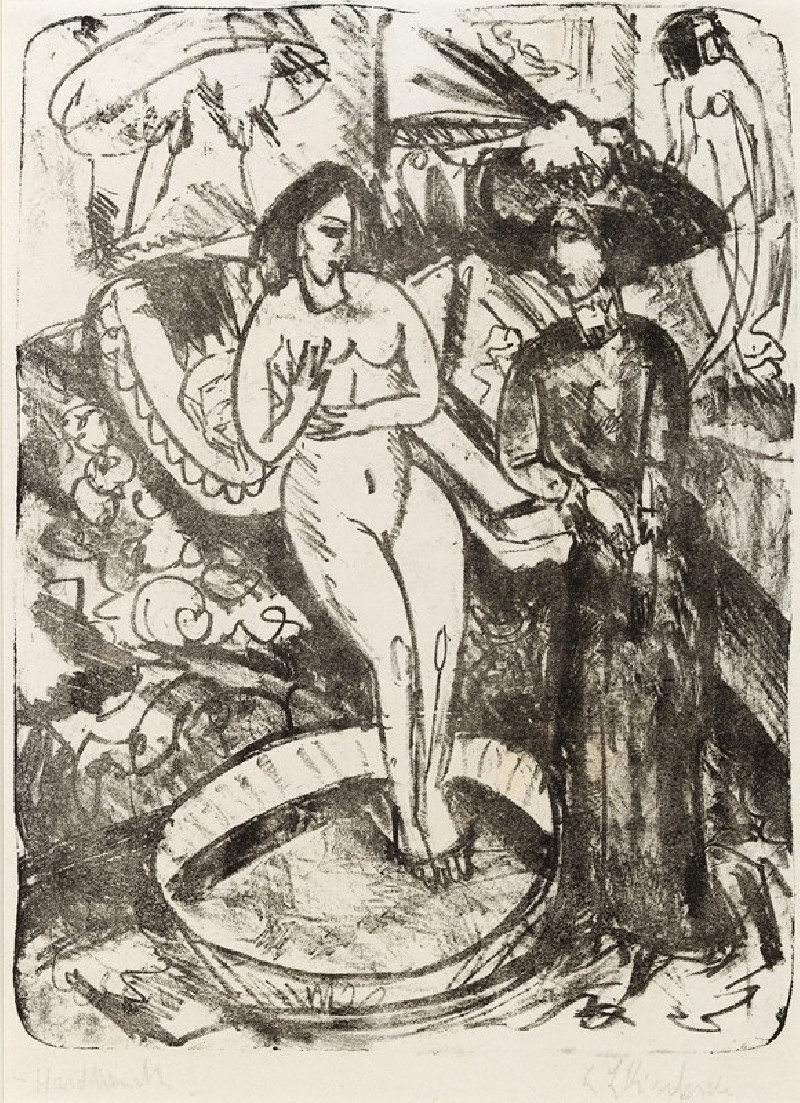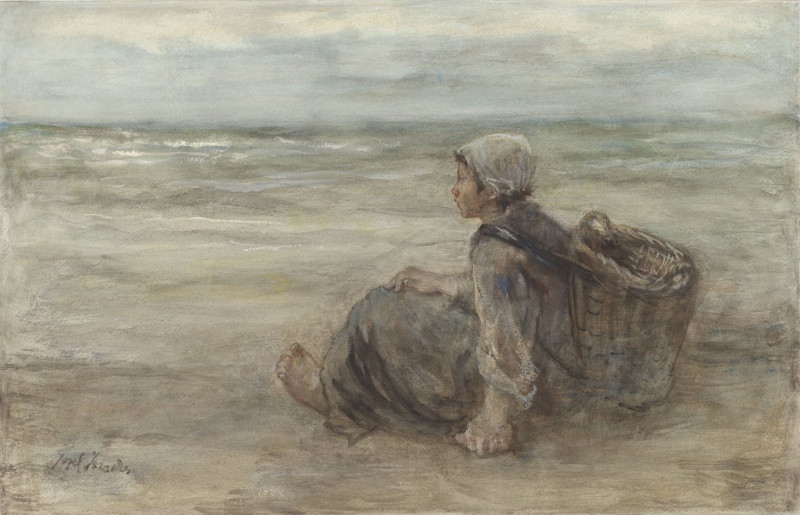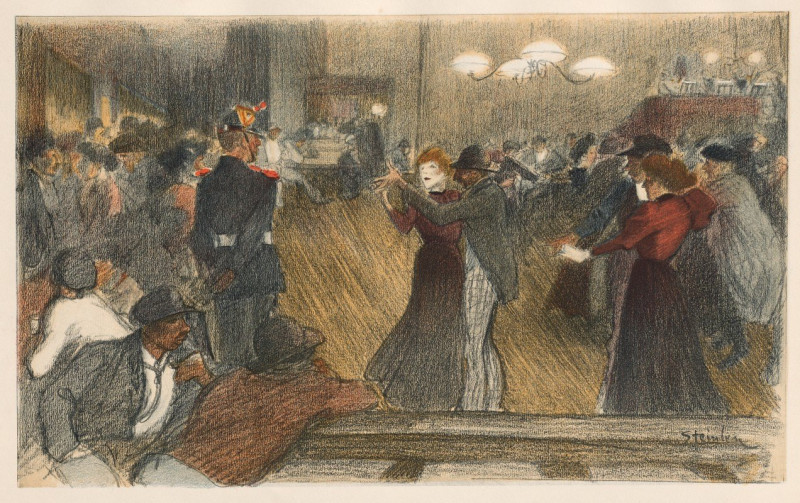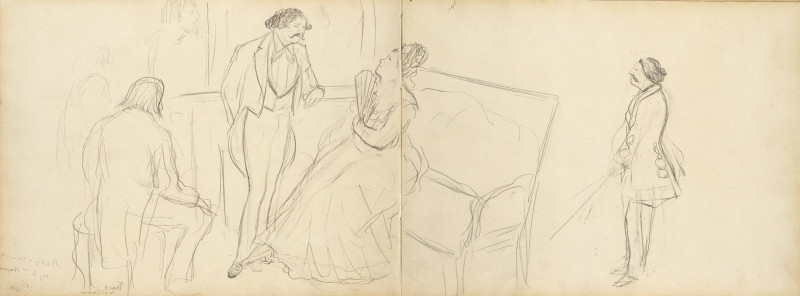Verfallener Friedhof in Goisern (1887)
Technique: Giclée quality print
Recommended by our customers
More about this artwork
"Verfallener Friedhof in Goisern" (1887) by Olga Wisinger-Florian is a stirring depiction of a forgotten and overgrown cemetery, swirling with the quiet life that nature reclaims in the spaces humans leave untouched. At the center of this serene landscape lies a small, secluded graveyard, cocooned by flourishing wildflowers and trees that whisper the tales of seasons past.This painting captures an ordinary day, bathed in the soft, diffused light of a mellow afternoon, where sparse sunbeams glint through the branches overhead. Three figures, presumably in reflection or prayer, are rendered in hues that harmonize with the earthy tones of their surroundings, emphasizing their connection to the natural cycle of growth and decay. The distant mountains and the subtle play of light and shadow infuse the scene with depth and mystery.Wisinger-Florian's brushwork delicately integrates the elements of the scene, from the textures of foliage and weather-worn tombstones to the gentle forms of the human figures immersed in their silent converse with the past.
Delivery
Returns
Olga Wisinger-Florian was an Austrian impressionist painter, mainly of landscapes and flower still life. She was a representative of the Austrian "Stimmungsimpressionismus [de]" (Mood Impressionism), a loose group of Austrian impressionist painters that was considered avant-garde in the 1870s and 1880s.

